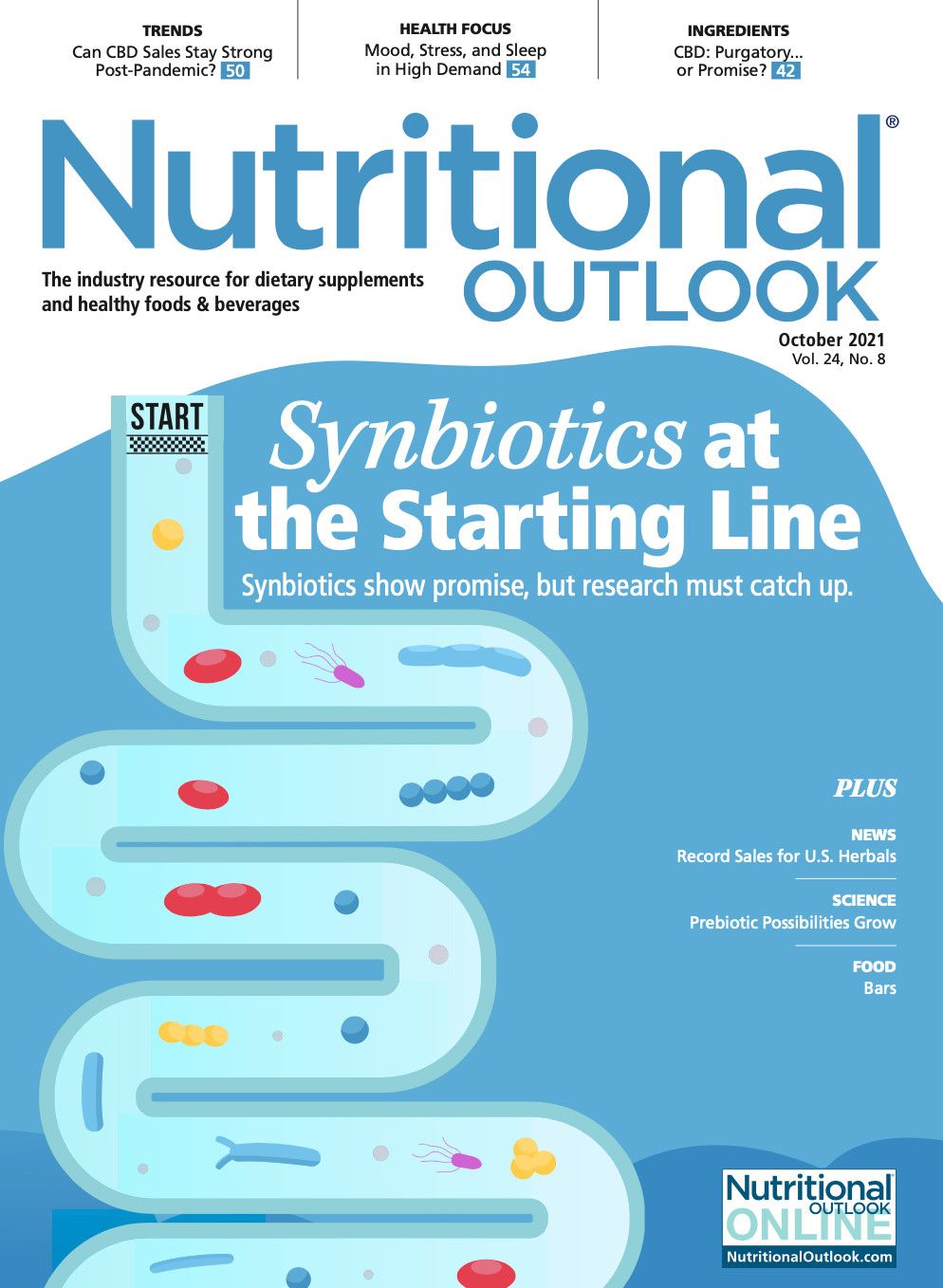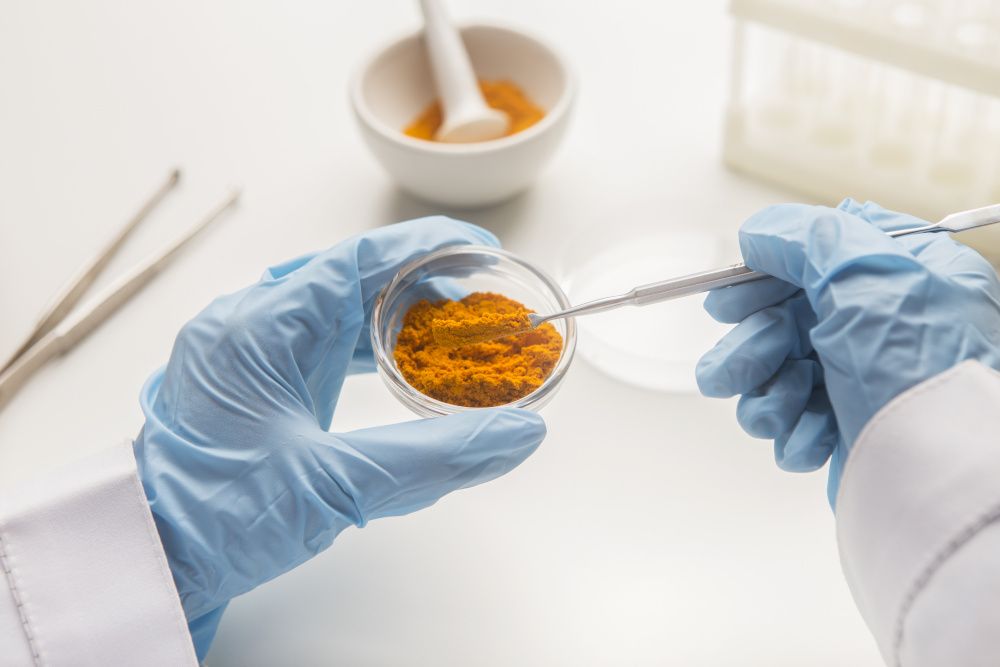Mining for gold: The latest in turmeric and curcumin research
Turmeric and curcumin research uncovers new gems.
Several years back, when turmeric was generating gushing headlines and effusive sales in equal measure, herbal-industry insiders, as well as anyone familiar with ancient healing traditions, must have been enjoying a quiet chuckle.
After all, this “blockbuster botanical” and “hottest new herbal on the market” is as old as Ayurveda and Traditional Chinese Medicine themselves. The only difference now is that mainstream consumers are catching on to its time-tested benefits—and researchers are carrying out studies to elucidate them.
As Benny Antony, PhD, joint managing director, Arjuna Naturals (Dallas, TX), puts it, “Turmeric has been used as food and medicine across cultures for centuries—but it’s also building a legacy of rigorous research, and that interest is not waning.”
All of which should buoy both new and existing fans alike. Because the more we learn about turmeric, Antony says, the more we realize that “quite a lot more remains to be discovered.”
Calming Presence
Turmeric’s star turn may have hit its zenith a few years ago, but the botanical (Curcuma longa) maintains a hold on the public’s attention and purchase decisions. Technavio even predicts $32.11 million in growth for the global market over the 2020-2024 period.1
To understand how turmeric sustains such a grip, “We need to look at why it was on top in the first place,” Antony says.
Namely, what endears the golden root to its users is its capacity to calm inflammation—a capacity that the scientific record now attributes to its constituent curcuminoids, principally curcumin.
“Curcumin is a natural anti-inflammatory,” Antony explains. “It boosts the body’s antioxidant capacity as it neutralizes free radicals while also stimulating the body’s own antioxidant enzymes.” Sufficiently absorbed, curcumin “has been proven to bring a wealth of benefits, from immunity support to mood and cognitive support,” he says.
Crossover Potential
Which is compelling evidence enough, as far as Sayantan Bhattacharya is concerned. The senior director of joint, bone, and muscle category at OmniActive Health Technologies Inc. (Morristown, NJ), and manager of the company’s curcumin portfolio, including Curcuwin, continues: “But what’s tremendously exciting for the category, and what we believe will propel curcumin’s next phase of growth, is the crossover we’re seeing into benefits around heart health and sports nutrition.”
Brandon Stolar, sales manager, Indena U.S.A. (Milan), agrees. “While the pandemic had consumers focusing more on immune products such as Echinacea and elderberry over the past year,” he observes, “turmeric and curcumin remain top-selling botanicals in both the mass-market and natural health-food channels. They’ll remain in the spotlight thanks to health benefits that continue being validated through scientific research.”
Investing in Science
That research is proceeding at a fast clip. A PubMed search of studies involving “turmeric” and “curcumin” reveals that more went into print in 2020 than in any year prior, Stolar says. “So, the scientific investment remains strong.”
So strong, in fact, that scholars are publishing studies on the studies. One such 2019 paper2—“Curcumin: Total-scale analysis of scientific literature”—found a whopping 18,036 publications on curcumin as of November 2018, 14,315 of which were original and more than half of which appeared after 2014, “indicating an increasing trend of interest,” Antony says.
Prevalent themes of inquiry range from turmeric and curcumin’s role in controlling acute and systemic inflammation—“which underpins many of today’s most serious chronic health conditions, like arthritis, Alzheimer’s, and cancer,” Bhattacharya notes—to its implications for gut health, brain health, and more.
Think About It
Consider the activity in the brain-health field.
“Studies have demonstrated an association between inflammation and five domains of cognitive health: memory, construction, language, psychomotor speed, and executive function,” explains Eric Meppem, commercial director, Pharamako Biotechnologies (N.S.W., Australia). “As a potent antioxidant, curcumin has been clinically shown to deliver protective effects against several neurodegenerative conditions associated with high levels of inflammation and oxidative stress.”
A recent study3 out of Westminster University and Coventry University involving 155 subjects found that six weeks of supplementation with a combination of iron and Pharmako Biotechnologies’ HydroCurc curcumin ingredient increased serum levels of brain-derived neurotrophic factor (BDNF)—a regulatory protein involved in normal neuronal function and energy homeostasis—by 37%, suggesting potential improvements in learning and memory.
“Iron deficiency can also impair cognitive development in children and compromise physical and cognitive performance in adults,” Meppem continues, pointing to a further study4 demonstrating the benefits of combined HydroCurc plus iron supplementation—this time in increasing serum ferritin levels in healthy adults by 35% relative to subjects who supplemented with iron alone.
“Significant differences in ferritin levels emerged between baseline, midpoint, and end time points in both the low- and high-dose ferrous-sulphate-plus-HydroCurc groups,” Meppem notes.
Antony calls attention to a study5 evaluating the neuroprotective effects and pharmacokinetic profile of Arjuna’s BCM-95 turmeric extract in an aluminum-induced neurotoxic animal model. The study, he says, “sheds light on the presence of free curcumin and its metabolites in the brain and plasma, and establishes its improved bioavailability and tissue distribution.”
One signal finding: As much as 200 to 300 times more curcumin was made available in key organs in the supplement group. “The importance of this study is that it demonstrates the benefits of curcumin—if you can just get it delivered effectively,” Antony says. “Multi-organ impact is common for many conditions, and this holds great promise for future research.”
Indeed, Meppem concludes, “Concerns about cognitive decline have increased dramatically in recent years. Modern lifestyles and diet, added to increased longevity, make this a real and growing concern for people of all ages.”
Our Microbiomes, Ourselves
Another concern across ages is gut health and the microbiome. As Stolar points out, “The microbiome and gut microbiota remain hot topics, and we’ve studied the effect of the microbiota on the biotransformation of curcumin.”
An in vitro study6 involving Indena’s Meriva curcumin formulation with lecithin demonstrates “a favorable effect on the natural biotransformation of curcuminoids by intestinal microbiota, with a more-efficient production of curcuminoid metabolites,” Stolar says.
“This opens new perspectives on curcuminoid metabolism and bioavailability,” he continues, noting that the formulation comprises “the full bouquet” of curcuminoids, including not just curcumin but demethoxycurcumin and bisdemethoxycurcumin. “Indena has several ongoing studies to deepen the knowledge base on curcuminoids and their metabolites,” Stolar adds.
Keep Moving
“Among the curcumin benefits we find interesting are the performance and sports-nutrition aspects,” says Bhattacharya. “Studies show our Curcuwin ingredient supports cardiovascular health and endothelial function and helps reduce pain post-exercise.”
One earlier study7 showed that supplementation with 1,000 mg of the ingredient significantly improved flow-mediated dilation (FMD), a measure of endothelial function and a predictor of cardiovascular health. “When compared to other ergogenics purported to increase blood flow, such as arginine,” Bhattacharya says, “Curcuwin demonstrated greater improvement in FMD at a lower dosage, resulting in greater blood flow and nutrient availability to support exercise performance.”
A more recent investigation8 linked eight weeks of supplementation with 1,000 mg of Curcuwin to “a greater tendency to preserve muscle performance in certain performance measures, and to reduce the muscle damage and soreness that often occur during and after exercise,” Bhattacharya continues. “The study also found that Curcuwin had the most favorable effect on muscle performance and was better than placebo in reducing muscle soreness.”
Meppem, notes that a double-blind, randomized clinical trial9 conducted at the University of Queensland measured blood markers for inflammation, muscle damage, and recovery, as well as visual-analog scale (VAS) scores for delayed-onset muscle soreness, at 24, 48, and 72 hours following exercise. Based on those measures, the researchers concluded that supplementation with HydroCurc allowed for not only a quicker return to training than the placebo, but a quicker return at higher thresholds, as well.
“Another surprising result from recent analyses of the blood markers,” Meppem adds, “was an elevation in mTOR levels following dosage with HydroCurc.” As an important regulator of protein synthesis and skeletal-muscle mass, mTOR, or mechanistic target of rapamycin, has an anabolic effect, he notes, “leading to potential muscle hypertrophy.”
Extension Around the Corner
Closely allied with sports nutrition is the joint-health category, which Meppem notes is established “in every market of the world.” But line extensions “offering novelty and efficacy bring new users to the segment and give existing consumers a reason to switch brands or trade up,” he adds. With new research supporting curcumin’s role in joint function, those extensions may be just around the corner.
One randomized, double-blind, placebo-controlled clinical study conducted at the University of Queensland found significant joint-pain relief—as measured by VAS scores—after two weeks of supplementation with HydroCurc, Meppem says. “Anecdotally,” he adds, “we’ve heard reports of rapid relief from joint pain, and we believe this is because of the rapid absorption and improved pharmacokinetics of HydroCurc.”
Such delivery advances “bring new curcumin opportunities to the joint-health segment,” Meppem concludes. But that’s only the beginning. As researchers dig more deeply into curcumin’s benefits—and as ingredient suppliers invent more effective ways of formulating with it—this ancient botanical will stay relevant well into the future.
References
- Technavio report. “Curcumin Market by Application and Geography – Forecast and Analysis 2020-2024.” Published June 2020.
- Andy WKY et al. “Curcumin: Total-scale analysis of scientific literature.” Molecules, vol. 24, no. 7 (April 9, 2019): 1393
- Lorinczova HT et al. “Co-administration of iron and a bioavailable curcumin supplement increases serum BDNF levels in healthy adults.” Antioxidants, vol. 9, no. 8 (July 22, 2020): 645
- Lorinczova HT et al. “Acute administration of bioavailable curcumin alongside ferrous sulphate supplements does not impair iron absorption in healthy adults in a randomised trial.” Nutrients, vol. 13, no. 7 (July 3, 2021): 2300
- Banji D et al. “Neuroprotective effect of turmeric extract in combination with its essential oil and enhanced brain bioavailability in an animal model.” BioMed Research International. Published online January 26, 2021.
- Bresciani L et al. “The effect of formulation of curcuminoids on their metabolism by human colonic microbiota.” Molecules, vol. 25, no. 4 (February 19, 2020): 940
- Oliver JM et al. “Novel form of curcumin improves endothelial function in young, healthy individuals: A double-blind placebo controlled study.” Journal of Nutrition and Metabolism. Published online August 17, 2016.
- Jäger R et al. “Eight weeks of a high dose of curcumin supplementation may attenuate performance decrements following muscle-damaging exercise.” Nutrients, vol. 11, no. 7 (July 23, 2019): 1692
- Mallard AR et al. “Curcumin improves delayed onset muscle soreness and postexercise lactate accumulation.” Journal of Dietary Supplements. Published online July 24, 2020.



























